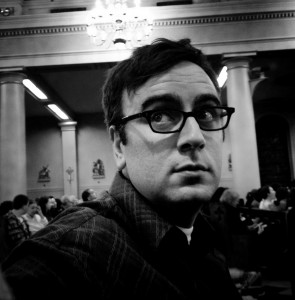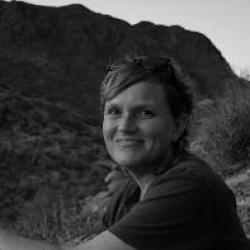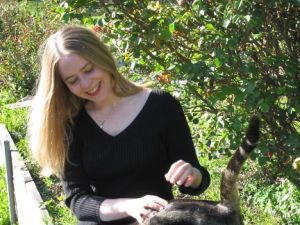 With the school year just starting up, I have new students asking about creating good writing schedules, patterns, and habits. As always, I recommend having a solid daily (or at least “near daily”) routine to get work done, whether that work means starting something new, tinkering with an existing piece, or revising to a final draft. That schedule is different for different people–when I was younger, it was always late at night. Now, I do this sort of work first thing in the morning. Of course, it all starts with a cup of coffee (importantly, though, I don’t allow myself a second cup until I’ve gotten some work done–I still hear Ron Carlson’s voice from graduate school saying that morning coffee can be a crutch to take you away from writing, so that second cup is reserved until after some work is done). Having a schedule like this, even if you don’t always follow it exactly, is incredibly helpful. I can always tell when I’ve been good about keeping to it, as opposed to slacking, based on the amount of pieces I’ve got done.
With the school year just starting up, I have new students asking about creating good writing schedules, patterns, and habits. As always, I recommend having a solid daily (or at least “near daily”) routine to get work done, whether that work means starting something new, tinkering with an existing piece, or revising to a final draft. That schedule is different for different people–when I was younger, it was always late at night. Now, I do this sort of work first thing in the morning. Of course, it all starts with a cup of coffee (importantly, though, I don’t allow myself a second cup until I’ve gotten some work done–I still hear Ron Carlson’s voice from graduate school saying that morning coffee can be a crutch to take you away from writing, so that second cup is reserved until after some work is done). Having a schedule like this, even if you don’t always follow it exactly, is incredibly helpful. I can always tell when I’ve been good about keeping to it, as opposed to slacking, based on the amount of pieces I’ve got done.
In addition to having that sort of daily schedule, though, I encourage them to write wherever the possibility arises, and (forgive me for using this phrase) whenever inspiration strikes. I’m not talking about setting a laptop up in a coffee shop to write while spacing out to the pastries case–I mean taking a second, wherever you are, to jot down images, ideas, phrases, words that jump out–this may be because you’ve actually seen something worth remembering, or it may just be that a particular turn of phrase is stuck in your head for some unknown reason. Get it down. After many times of thinking to myself, “oh, I’ll remember that later”–and then, of course, not–I’ve tried to be much better about that.
This is an approach I’ve always known to be helpful, but really stepped up my use of it over the past few years. At least half of the poems in my new book started “on the scene,” so to speak, and then were finished during my regular, home-based writing schedule. Looking through the table of contents, I can easily point to the places where each started, even if it was just a one-line image: the corner of 6th and Broadway in Downtown LA, the shoreline in La Conchita, a gas station in Tarzana, awaiting jury duty in a municipal building, outside any number of music venues (Largo, El Cid, Silverlake Lounge all come to mind)–the list goes on. One of my favorite of these memories, though, had me piecing together cryptic text messages on a very bright California morning.
The previous evening, I had gone with a group of friends to a glittery, velvet-rope-having, line-down-the-block dance club in Hollywood–not the sort of place I frequent, admittedly. The Los Angeles I love and live in is much more Big Lebowski than TMZ, but I also enjoy trying just about anything, so I went along, strolling into a club bordered by a perimeter of paparazzi. Needless to say, I felt a little out of place walking past the line of people dressed as if they were auditioning for a reboot of Club MTV (a reference that shows my age, but makes sense considering that, a week later, an MTV personality was DJing in this very club). Thanks to some good planning, and what I suspect was string pulling, by my friends, though, we walked past the crowds and right to our table on the edge of the dance floor.
I am, to be honest, not exactly one to walk into a dance club and immediately break out killer moves (although, I do always fantasize about reenacting the classic dance scene from Airplane in this sort of setting), so after getting a drink and swaying tastefully around my friends for a while, I removed myself from the actual dance floor. Walking up to the rise, near the DJ, I watched the crowd for a while. Then, moved back down and out to the smoking deck to get away from the crowd for a bit. Then, back to our table to get another drink, then back to the rise, and so on and so forth. As the night went on–and it went on a while–I got over myself and wound up back in the mass of people on the dance floor, and everything just moved on from there. Importantly, during all of this, I sent myself two text messages.
In the midst of the evening, I had two of those “write this now” moments, and didn’t want to forget them. They weren’t grand reveals of entire poems, but were just images/ideas that jumped out: one from standing on the second level looking at the crowd, and one from leaning on the outdoor patio and seeing people come in and out. As unromantic as texting yourself poem ideas sounds, I didn’t want to lose the ideas.
The next morning, I turned on my phone to find the two texts. The first simply said “medusa head dead snakes.” The second, which read “stones sparking above,” was accompanied by a video. I had tried to subtly get a picture–subtly because I didn’t want to seem like the creep staring down at the crowd taking photos of strangers, but did want to capture the scene. I accidentally hit the video button, though, and wound up with an 8-second clip. Here’s the video, for reference: https://vimeo.com/76005684
Sitting at my desk with these two clues, I started my regular writing routine. The “stones sparking above” quickly gave way to an entire poem, with Medusa appearing with a “ghost snake halo” near the end. It was the first time I’ve ever invoked Greek mythology in a poem, and after revision and revision and revision, it became “The Gods Take Your Secrets, and the Gods Take You Down,” which appears in the new book.
I haven’t shared this story with those same students who asked about writing habits, as I don’t relish the thought of them picturing me dancing around in a strobe-light twitching Hollywood club (years ago, two students saw me dancing at an Outkast show in Atlanta, and they later admitted it was hard to look at me the same way in class after that). All the same, it reminds me of the importance of writing wherever writing wants to arrive, whether it is at a desk with morning coffee, or in a club, hearing your friends call you back into a crowd of dancing bodies.
Robert Krut’s new book, This is the Ocean, will be released on October 11, but can be pre-ordered at http://www.bonafidebooks.com/this-is-the-ocean/



